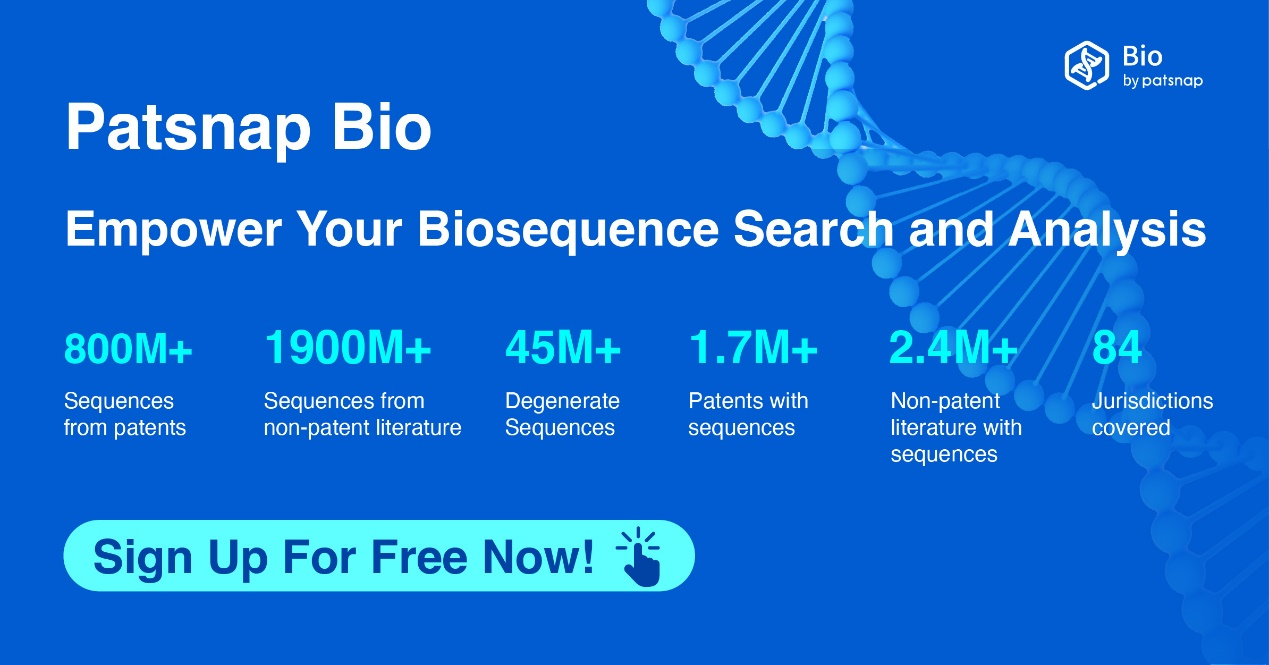Request Demo
Bio Sequence
Biological Glossary | What is Sense Strand?
12 December 2023
2 min read
In biology, a sense strand or coding strand is the part of the double-stranded DNA that carries the translatable code, running in the 5' to 3' direction. It is complementary to the antisense strand, which does not directly carry the translatable code. The sense strand has the same sequence as the mRNA which is used as a template for protein synthesis during transcription. A key difference is that in the DNA sense strand, thymine is present instead of uracil, which is found in mRNA.
Free registration is available for the Bio biological sequence database: https://bio.patsnap.com. Act now to expedite your sequence search tasks.
AI Agents Built for Biopharma Breakthroughs
Accelerate discovery. Empower decisions. Transform outcomes.
Get started for free today!
Accelerate Strategic R&D decision making with Synapse, PatSnap’s AI-powered Connected Innovation Intelligence Platform Built for Life Sciences Professionals.
Start your data trial now!
Synapse data is also accessible to external entities via APIs or data packages. Empower better decisions with the latest in pharmaceutical intelligence.
Keep Reading
Back to all blogs →Latest Hotspot
3 min read
Ascletis has commenced a stage three clinical evaluation for their acne medication, ASC40, also known as Denifanstat
12 December 2023
Ascletis Pharma Inc. has declared the commencement of a pivotal Phase III clinical study for its fatty acid synthase inhibitor, ASC40 (Denifanstat) , aimed at addressing the therapeutic needs of individuals with moderate to severe acne vulgaris.
Valuable Targets
4 min read
What are NS5A inhibitors and how do you quickly get the latest development progress?
12 December 2023
NS5A inhibitors: Revolutionizing hepatitis C treatment with high efficacy and future potential.
Latest Hotspot
3 min read
Merus Showcases Preliminary Results for MCLA-129 at the 2023 ESMO Asia Congress
12 December 2023
Merus N.V. has revealed fresh interim clinical findings on their candidate molecule MCLA-129.
Bio Sequence
2 min read
Biological Glossary | What is Repeat_region?
12 December 2023
In biology, a repeat region refers to a sequence of DNA that is repeated multiple times in the genome.
Get started for free today!
Accelerate Strategic R&D decision making with Synapse, PatSnap’s AI-powered Connected Innovation Intelligence Platform Built for Life Sciences Professionals.
Start your data trial now!
Synapse data is also accessible to external entities via APIs or data packages. Empower better decisions with the latest in pharmaceutical intelligence.




